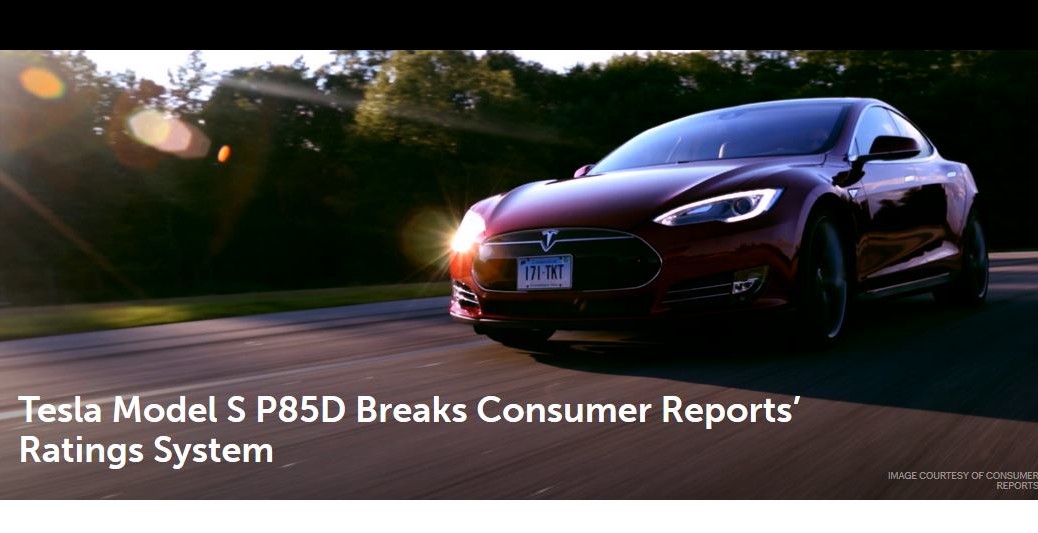Some at Consumer Reports were no-doubt trying to figure out a good way to explain how their much-vaunted ratings system had broken.
Turning Lemons into Lemonade
As it turned out, Consumer Reports cleverly decided to trumpet that their ratings system had been broken. The strategy worked so well that their web site crashed, apparently under the load of all the interest raised by the headline: Tesla Model S P85D Breaks Consumer Reports’ Ratings System.

Note: The link to Consumer Reports‘ original post currently redirects to Consumerist.com with a note that “This story was first published by our sister publication Consumer Reports.” This may or may not be related to Consumer Reports‘ web site challenges.
Setting Expectations
Once upon a time I taught a class for IBM / Technology Service Solutions titled Customer Satisfaction: Our Moment of Truth. A key section was on the importance of properly setting expectations, and then meeting – or exceeding them.
I got a reminder of the importance of expectations when I went car shopping a couple years ago. The auto industry (and yes, Consumer Reports) eagerly anticipated the 2013 Ford Fusion Hybrid. It promised an EPA estimated 47/47 miles per gallon (47 MPG highway and city). That certainly seemed to be worth waiting for.
Unfortunately, the real-world mileage was much lower. For me, that meant moving on to look at different cars. For others, it meant filing a lawsuit against Ford. The two different reactions had the same root cause: Unmet expectations.
In fact, I dropped my subscription to Consumer Reports, partly because it didn’t meet my expectations. (It was time to let some subscriptions lapse, and CR didn’t make the cut to stay.) Their reaction was very positive, resetting my expectations by letting me know they’d love to have me back.
Insane Mode
Tesla‘s Model S P85D sedan offers Insane Mode, which apparently exceeds expectations.
What isn’t meeting your expectations – and does that point to the product or service, or to the expectations?

